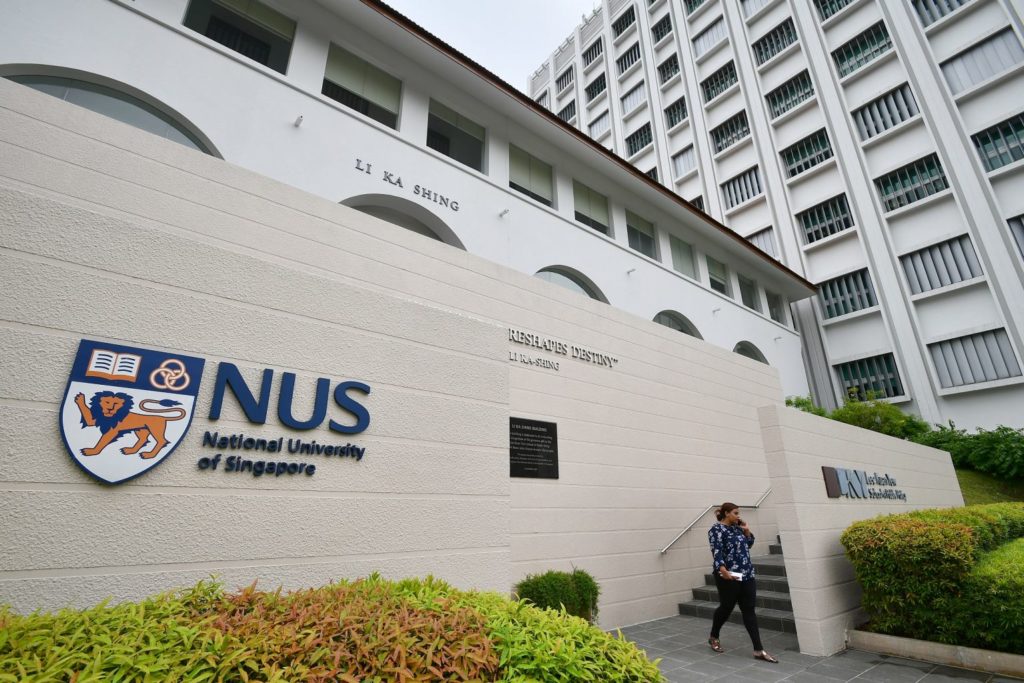Research & Studies

Mónika Mátay, research fellow of the Institute of Advanced Studies held lectures on 29 and 30 of January 2019 at the Department of History (YALE-NUS) and at the Department of Architecture of the National University of Singapore within the framework of the ERASMUS+ academic exchange program. Lectures aimed to present Hungarian research and improve the microhistory research network, in which international universities and scientific institutes are involved. The programs were organised by professors of the National University of Singapore, Chin Chuan Fei (NUS, Department of Philosophy) and Máte Rigó (YALE-NUS, Department of History).

Mátay presented the basic concept and method of the Talking Houses project in Kőszeg which involve the interdisciplinary (social-historical, literary, architectural and art historical as well as musical) interpretation of cultural heritage, microscopic approach, interconnection of macro- and micro-level studies with scale change as well as analyses of life stories and networks. Understanding of the town’s history is not an end in itself, the major objective of the project is to integrate the past in the cultural identity of today’s people. In the age of identity crises prevailing across 21st-century Europe, better understanding of locality, local values and that of the local cultural heritage is of decisive importance. Within the framework of her lecture, Mátay addressed the unique position of Kőszeg in the Hungarian urban network as well as the impact of its Austro-Hungarian double bond on its development.
Compared to other settlements, in the course of its history Kőszeg has proved to be more innovative, it has been capable of overcoming critical situations and finding new ways for its development. Social groups including the nobility and aristocracy have played a major role in this from the 18th-century as they have engaged in the town’s life due to their role in the Transdanubian District Board, religious organisations, orders of monks and nuns and local Jewry to name a few key examples. Thanks to their network operation, these groups have integrated local achievements and initiatives into national and international frameworks and vice versa, local art, musical, educational and scientific results have been closely linked to network operation as networks have created the background for success. In the case of Kőszeg it is remarkable that – considering its size and population – networks aiming at innovation have engaged significantly in the town’s life.

In the lecture, Mátay covered analyses of individual life stories with special regard to achievements of Imre Festetics who had been the first to explore the genetic laws. She also provided interpretation of the aristocratic-scientific as well as economic and cultural environment providing background for success. She presented the outstanding role of the Festetics family in the history of Kőszeg, the patriotic mission of father and son and their scientific endeavours. Mátay also dealt with the strong bond of world-famous writer Ágota Kristóf with Kőszeg and her choice of this town as her burial place even if she had spent not even a decade here, however, it remained the most decisive place in her life.
Organisers requested Lilian Chee, deputy head of the Department of Architecture to be a commentator. Her remarks mostly reflected on the method while she raised the question as to whether the academic discourse applied in research overshadows particular stories studied separately, the people interviewed and individual voices. It was also discussed how it was possible to harmonize the requirements of academic research with that of tourism. Moreover, how is it possible to present results at two levels to two different types of audience? The audience raised the question as if it was possible to apply the anthropological approach to individual cases, families and persons involved in stories? Do social historians manage to concentrate on their own material in the sense that they organise the concept system, chronology as well as the elaboration and grouping of data not according to external criteria but in a line with the values and worldviews of persons involved in studies?
Singapore will celebrate the bicentenary of its foundation in 2019, however, in South-eastern Asia it is a unique city state due to the remarkable success it has witnessed so far. It is open to the creative city concept and its specific meaning as well as to the feasibility of sustainable development in particular areas such as tourism. Lilian Chee emphasized the vital role of the latter that is apparently a market issue. Considering the audience’s reaction and research currently being conducted in Singapore, besides sustainability and preservation of cultural heritage, it is clearly an important endeavour to present and make neglected or marginal groups “transparent”. One of the current exhibitions of the Indian Heritage Centre presents the history and customs of the Tamil-origin small community of the Chetti Melaka. Sustainability and cultural value preservation are keywords of recent relevance, their reconciliation is a 21st-century challenge in Singapore with a population of 5,6 million as well as in Kőszeg with 12 000 residents.
© 2017-2023, All Rights Reserved